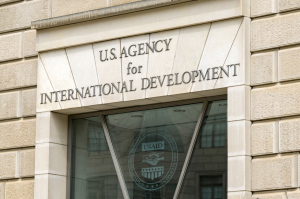Alabama County Files for Bankruptcy; Biggest in US History
Jefferson County of Alabama filed for bankruptcy protection Wednesday, making it the biggest municipal bankruptcy in U.S. history.
Jefferson County contains Birmingham, Alabama’s largest city, and has a population of around 666,000, including some of the state’s wealthiest residents. The bankruptcy protection claim came about after a failed agreement between elected officials and investor to refinance $3.1 billion in sewer bonds, according to Bloomberg.
An hour after city commissioners voted 4-1 to file the bankruptcy claim, the resolution was signed by Commission President David Carrington.
"After over three years of diligent efforts toward regaining financial stability, the county has exhausted its options, and additional delays in resolving its financial crisis will further harm the county's prospects for recovery and future economic development," the resolution stated.
Kenneth Klee, in an interview with Bloomberg, said that filing for bankruptcy was necessary because negotiations between the creditors and receivers regarding the sewer system came to a halt.
Commission sources also told Reuters that tension arose when the estimated savings from the September agreement decreased by about $140 million.
“There was an impasse reached,” Klee said.
“None of the creditors – zero – signed up to the deal that we have been negotiating for six weeks.”
"In September 2011, the commission and receiver entered into a comprehensive term sheet setting forth a framework for the resolution of the sewer system crisis," the commission said in a press release.
"Creditors ultimately were unwilling to make the economic concessions contemplated in the term sheet and the receiver made additional demands inconsistent with the term sheet that the commission was unwilling to accept."
Commissioner Sandra Little Brown told The Wall Street Journal that she was not pleased with the previous agreement because she wanted “debt holders to contribute more toward helping low-income residents pay their sewer bills.” According to her, under the proposed agreement the county would pay for the $30 million fund for a minimum of 10 years.
A J.P. Morgan Chase & Co. Spokesman, the county’s largest creditor, told WSJ that the bank “worked very hard” with the county to avoid bankruptcy. The company offered a “substantial financial concessions to make the deal happen." He added that the bank will continue to work with the county to find a solution.
Filing for bankruptcy does not wipe clean the $4.1 billion the county owes, commission president David Carrington told USA Today.
"A plan would have to be worked out in bankruptcy court and approved by a judge and at least one group of creditors,” Carrington said. “The bankruptcy's financial burden for residents and employees likely won't be known until that plan is in place.”
Gov. Robert Bentley disapproved of the commission’s decision.
"I am disappointed by the commission's decision today, as bankruptcy will negatively impact not only the Birmingham region, but also the entire state," he said in a released statement. Bentley said he had tried to convince the county to not declare bankruptcy.
The county is filing under Chapter 9 which is different from the other chapters in the bankruptcy code. It does not allow the court to liquidate and distribute the county’s assets.
Prior to Jefferson County’s filing, the largest Chapter 9 filing was by Orange County, California, in 1994.





























